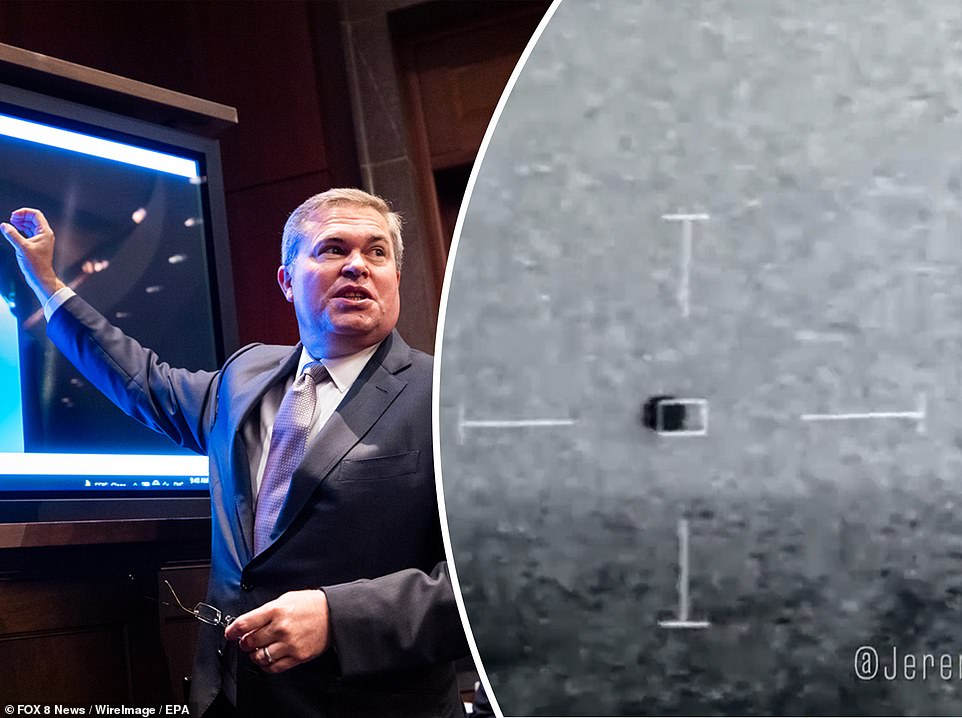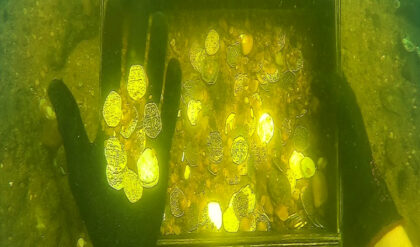
Sailors on board a fleet of Navy warships sailing off the Southern California coast in July 2019 witnessed several of the ships being swarmed by a host of unidentified flying objects. The incident went on for hours, and then happened again and again throughout the month, with craft hovering and zipping around near the fleet with flashing multicolored lights. Navy chiefs have tried to explain away the incident, with the Deputy Director for Naval Intelligence saying he was ‘reasonably confident’ the objects were drones.
But documentary filmmaker Jeremy Corbell, in an exclusive interview with DailyMail.com earlier this week, said that crew from the ships have told him the swarms of ‘at least 100’ UFOs possessed unexplainable capabilities far beyond traditional drones. And he warned that unless the government can determine who was behind the swarm, the intelligence failure would ‘dwarf our mistakes made surrounding the events of 9/11.’ ‘I don’t care if these were ”drones” or true UFOs, pyramids, triangles or even seagulls with lights strapped onto their wings. I want the fundamental question to be answered. Do we know the controllers of these units?’ he said.
![Contrary to the official Navy version of events, the shocking claims raise the prospect that the craft filmed and caught on radar about 100 miles off the San Diego coast were either incredibly advanced foreign technology, or something otherworldly. 'We don't know yet what exactly these craft were. But whatever they are, their abilities and presence alone represents a serious national security issue and shouldn't be dismissed out of hand,' Corbell told DailyMail.com. Pictured: Still images from a video show a spherical object diving into the Pacific Ocean off the coast of California. Jeremy Corbell says the video shows 'FLIR [forward looking infrared] data' that is complimented by the radar footage.](https://tapchitrongngay.com/wp-content/uploads/2024/07/59433721-10958621-Contrary_to_the_official_Navy_version_of_events_the_shocking_cla-a-9_1656361616776.jpg)
Contrary to the official Navy version of events, the shocking claims raise the prospect that the craft filmed and caught on radar about 100 miles off the San Diego coast were either incredibly advanced foreign technology, or something otherworldly. ‘We don’t know yet what exactly these craft were. But whatever they are, their abilities and presence alone represents a serious national security issue and shouldn’t be dismissed out of hand,’ Corbell told DailyMail.com. Pictured: Still images from a video show a spherical object diving into the Pacific Ocean off the coast of California. Jeremy Corbell says the video shows ‘FLIR [forward looking infrared] data’ that is complimented by the radar footage.
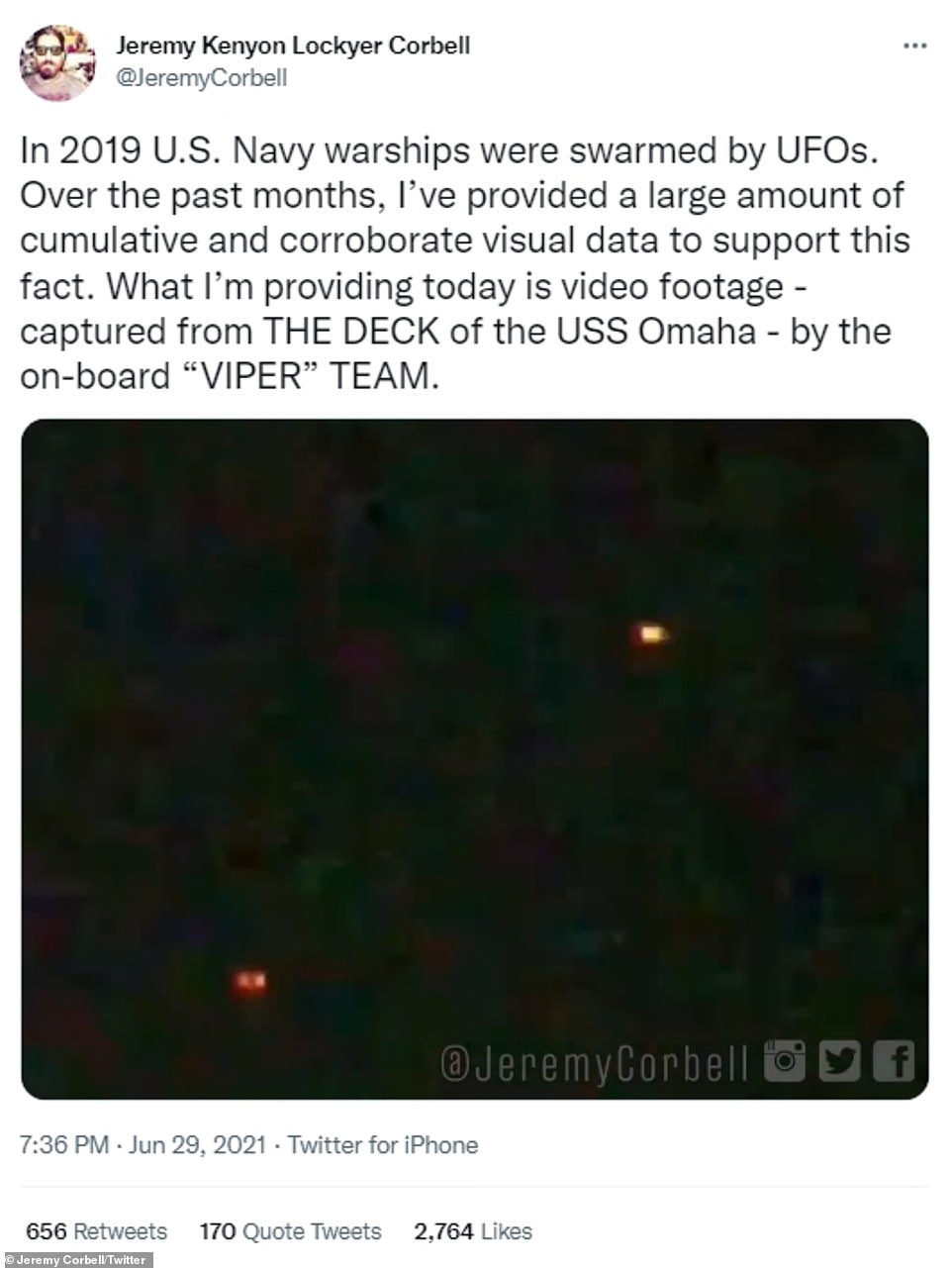
Last year the film-maker published videos from the warship incidents that set social media ablaze (pictured). The videos, verified by the Pentagon, pictured flashing objects hovering above US Navy ships in the Pacific Ocean west of San Diego, radar screens picking up nine of the craft, and infrared footage of one orb-shaped object diving into the ocean. But in an historic hearing on UFOs held last month, Deputy Director for Naval Intelligence Scott Bray dismissed the footage, saying he was ‘reasonably confident’ the objects were drones.
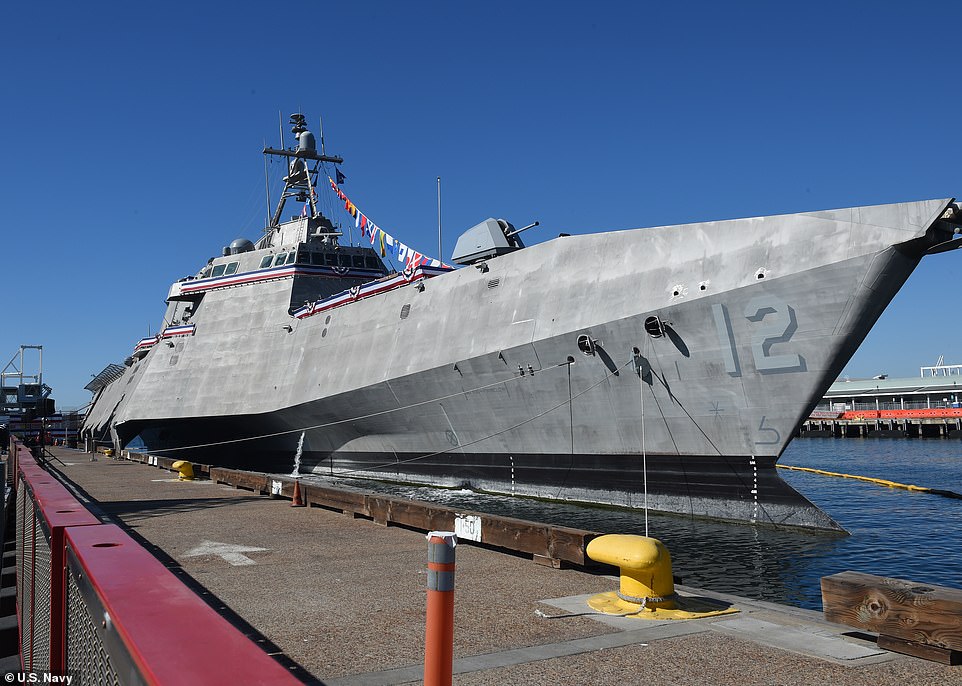
Last week the Navy also released briefing slides (pictured) suggesting the craft were ‘Quadcopter style UAS [unmanned aerial systems]’ and likely came from a nearby Hong Kong-registered freight ship. The Navy documents show the freight ship, Bass Strait, was docked in Long Beach, California, about 100 miles away when some of the incidents occurred – making Corbell’s contacts skeptical it could have been the source of the swarm. Corbell is now hitting back, claiming that he has ‘dozens’ of accounts from crew, investigators and briefed officials who say that the freight ship was ruled out, the nature and origin of the craft are still unknown, and that they flew in ways that would put publicly known drone technology to shame.
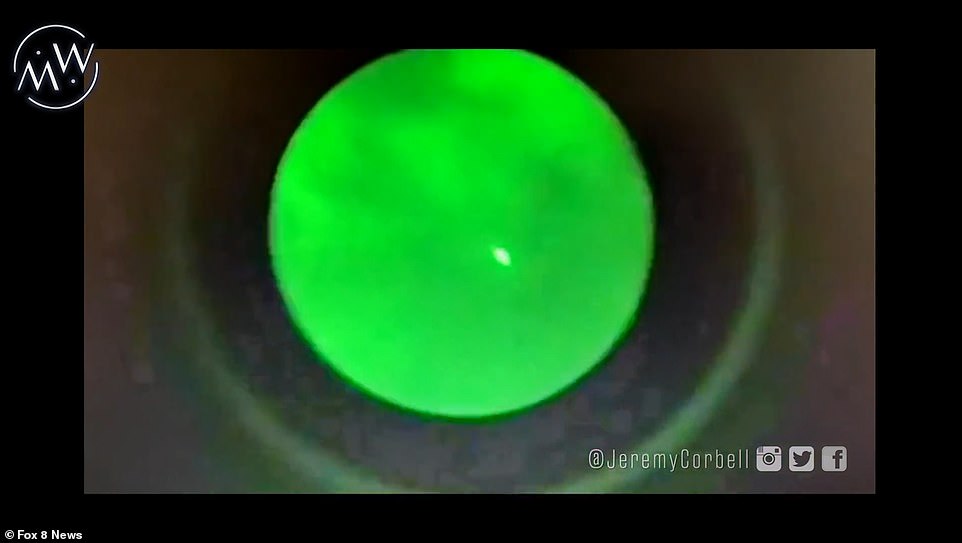
According to Corbell’s sources and the Navy’s own documents released under the Freedom of Information Act (FOIA), these craft’s capabilities included hovering at altitudes of up to 21,000ft, flying for more than four hours, traveling long distances in one flight, and being apparently impervious to anti-drone Navy technology. Corbell paraphrased one witness on the destroyer the USS Russell who he claims told him they saw one of the craft ‘accelerate instantaneously into the upper atmosphere’, and that other sources with knowledge of the case said the objects were detected moving from the air into the sea. Pictured: The USS Omaha.
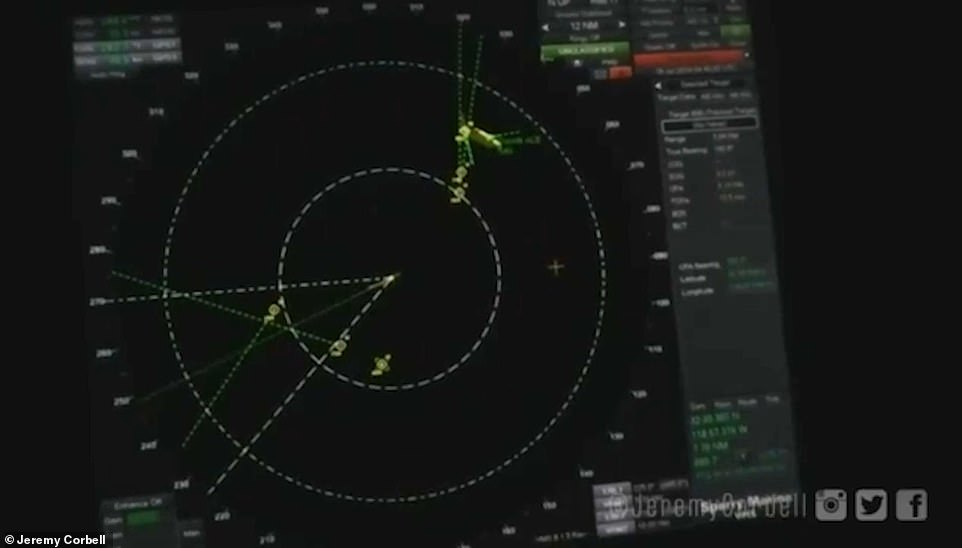
One of the biggest mysteries about the ‘drones’ is how they were able to hold enough power to fly for so long, high, fast and far. A crewman with direct knowledge of the case, who spoke to DailyMail.com on condition of anonymity, called the incident ‘world-changing.’ ‘We don’t yet have enough information to say whether this is man-made technology or not,’ the Naval officer said. ‘But the amazing energy capacity of these craft is world-changing regardless.’ Navy briefing documents released under FOIA and published this month by defense news site The Drive detail eight incidents where ‘unmanned aerial systems’ (UAS) swarmed five warships in the Pacific Ocean off the Southern California coast. Pictured: The video was taken in July 2019 by naval officers using a night vision device.

The incidents occurred on four days between July 15 and July 30. Objects referred to as UAS or ‘unmanned aerial vehicles’ (UAV), two technical terms for drones, were caught on camera, radar, and seen by sailors flying over and beside the ships. Some of the incidents lasted as long as four and a half hours, and craft were observed as high as 21,000ft in the air over the ocean. The Drive highlighted the description of the craft as ‘quadcopter style UAS’ in reports released by the Navy. But a senior staffer at a US defense contractor who is an expert in military technology told DailyMail.com they believed the craft that hovered above the Russell were ‘much more advanced’ than a traditional drone. Pictured: The video of the radar corroborates video filmed by sailors aboard the USS Omaha showing a strange spherical object splash down into the Pacific Ocean.
-
Copy link to paste in your message
The contractor, who asked not to be named due to their job’s sensitivity, said modified quadcopters can fly as high as 30,000ft but only for short periods. ‘The best quadcopter battery lasts an hour or so,’ the source said. ‘Climbing four miles takes time, and once the vehicle reached that altitude it would struggle to maintain a fixed or slow-moving position over the ship as the wind speed increased.’ Footage of a radar screen detecting a swarm over the USS Omaha in July 2019 shows nine drones moving up to 138 knots (more than 158 miles an hour) with winds of 31 knots.
-
Copy link to paste in your message
‘Maintaining position under such conditions would increase the energy burn and greatly limit the time on target to just a few minutes, especially considering the quadcopter has to return to its point of origin. In addition, the reports mentioned the vehicle was illuminated, further increasing its power drain,’ the defense contractor added. The military tech expert said top quadcopters have a maximum range of about seven miles, meaning their launch site would have to be near the warships. ‘The vessel would have been easily detected as well as the launch of the quadcopter,’ they said. ‘Considering these limitations, I don’t think the illuminated vehicle that hovered four miles above the ship for a prolonged period could have been a traditional quadcopter. They just don’t have the range or the staying power. It had to be a much more advanced aircraft.’
